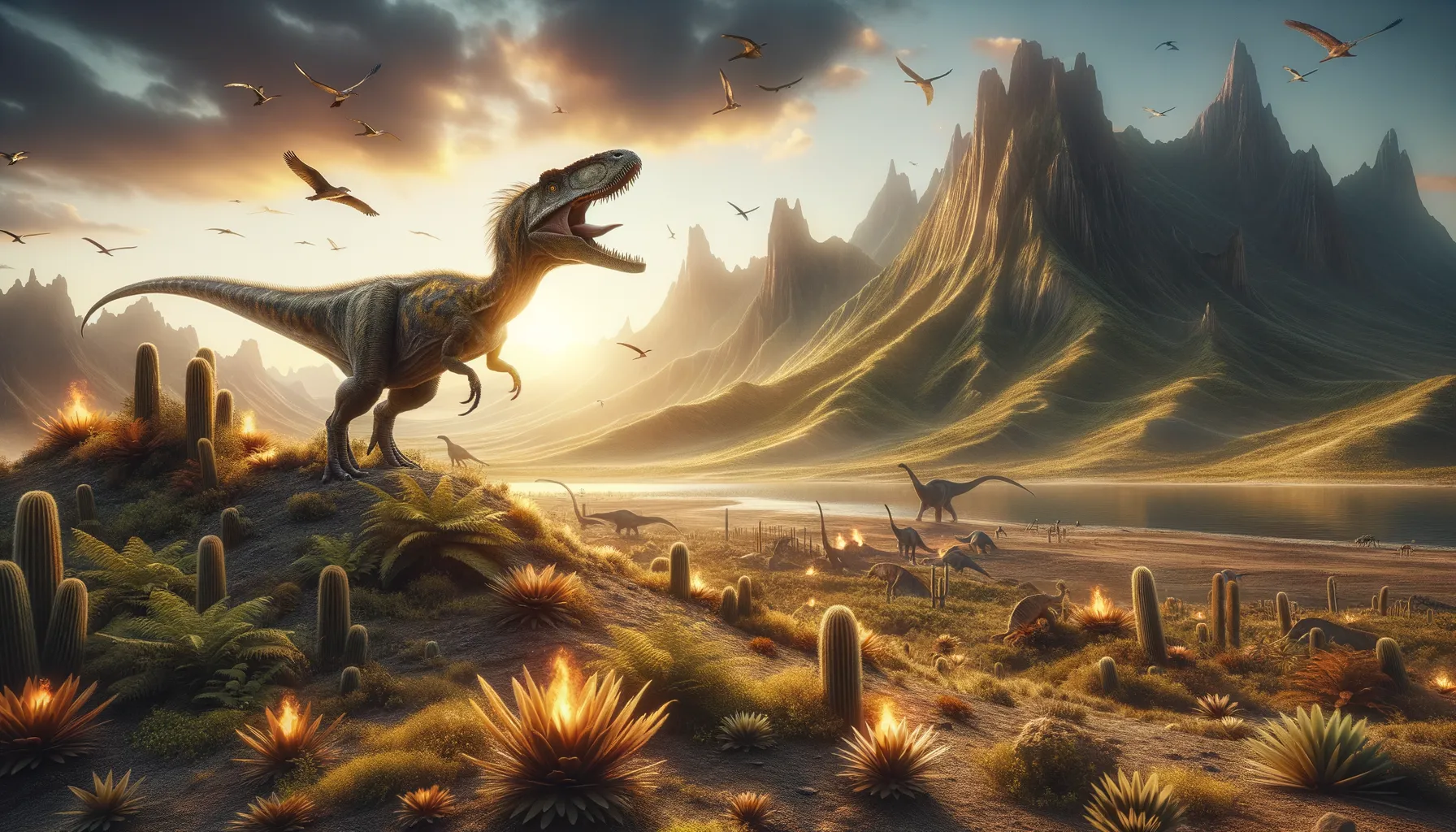
Byronosaurus
Sleek predator of ancient Mongolia's plains.
Period
Cretaceous
Length
Around 1.5 meters long.
Height
About 0.9 meters tall.
Weight
Approximately 4 to 6 kg.
Byronosaurus was a small theropod dinosaur that roamed the landscapes of ancient Mongolia during the Late Cretaceous period. Known for its sharp teeth and keen senses, it thrived as a predator in its ecosystem. Fossils of Byronosaurus have provided valuable insights into the evolution of small theropods, especially in understanding their anatomy and lifestyle. Its bird-like features highlight the fascinating link between dinosaurs and modern birds.
Diet
Byronosaurus was likely a carnivore, preying on small reptiles and mammals. Its sharp teeth suggest it was well-adapted for hunting and slicing through flesh. As a smaller dinosaur, it may have also scavenged for food when opportunities arose.
Hunting
Byronosaurus would have relied on its agility and speed to catch prey. Its size allowed it to navigate dense underbrush, useful for ambushing unsuspecting creatures. It possibly hunted alone or in small groups, making use of teamwork for larger prey.
Environmental challenges
The arid regions of the Gobi Desert provided sparse vegetation and seasonal water availability challenges. Byronosaurus had to adapt to temperatures ranging from scorching days to cold nights. Predation by larger theropods and competition from other small carnivores were constant threats. Adapting to find food in a resource-scare environment was essential for survival.
Speed
Likely fast, due to its small size and build.
Lifespan
Estimated up to 15 years based on similar species.
First discovery
Discovered in the Gobi Desert, Mongolia in 1993.
Fun Facts
- Byronosaurus was a small, feathered dinosaur living about 80 million years ago during the Late Cretaceous period.
- It belonged to a group of dinosaurs known as troodontids, which were known for their large brains and keen senses.
- Byronosaurus had a reputation for running fast and may have been as quick on its feet as modern-day birds.
- Unlike some dinosaurs, Byronosaurus had a long, slender snout filled with many tiny teeth, perfect for catching small prey.
- Paleontologists have found Byronosaurus fossils in Mongolia, offering a peek into life in ancient Asia.
- Despite its small size, Byronosaurus was a skilled hunter, possibly dining on insects and small mammals.
- Byronosaurus probably communicated with other dinosaurs using a combination of vocal calls and body movements.
Growth and Development
Evidence from fossil records suggests that Byronosaurus grew relatively quickly during its juvenile stages. This rapid growth might have been a strategy to evade predators by reaching maturity sooner. Juveniles likely relied on parental protection or stayed in colonies. Like many small theropods, it may have had significant changes in appearance as it developed.
Habitat
Byronosaurus inhabited semi-arid desert environments, characterized by open plains and sparse vegetation. Seasonal variations created challenges such as finding water and shelter. Fossil evidence indicates it may have utilized burrows or natural shelters for protection. Its habitat was shared with a range of other dinosaurs, from herbivorous giants to fellow predators.
Interaction with other species
Byronosaurus would have encountered a variety of other dinosaur species, both as competition and prey. As a small carnivore, it likely avoided direct conflicts with larger predators. Its size allowed it to occupy a niche where it faced less competition for small prey. Social interactions could have mirrored those of modern-day pack hunters in similar ecological roles.
Natural lifespan
Byronosaurus likely lived around 12 to 15 years in the wild.
Reproduction
Byronosaurus, like many theropods, likely laid eggs, probably in communal nesting sites for protection. Fossilized nests suggest some parental care was given to the young. Hatchlings might have been altricial, requiring feeding and protection until they could fend for themselves. Nesting locations were chosen based on safety and proximity to food sources.
Social behaviour
Byronosaurus might have exhibited social behaviors similar to those seen in pack-hunting animals today. It potentially formed small hunting groups or family units for cooperative hunting. Communication among these groups would have been vital for successful hunting and territory defense. Solitary behaviors might have occurred during lean times when resources were scarce.
Fossil locations
Fossils of Byronosaurus have been primarily found in the Djadokhta Formation of Mongolia. These findings include skull material, helping establish its place in the dromaeosaurid family tree. The location of its fossils has contributed to our understanding of the diversity of small theropods in Asia. Further exploration may uncover additional sites and specimens, enriching its evolutionary history.
